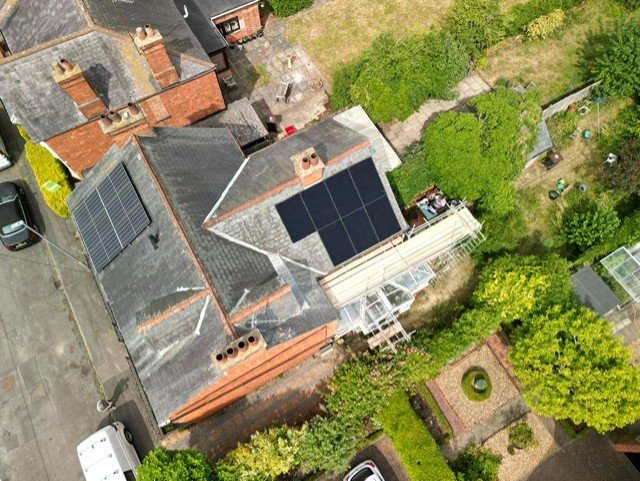
We had these seven solar panels installed in early July on the part of our roof that is south-facing. The panels and their battery are working well and we spend quite a lot of time looking at an app that tells us how much solar electricity we are generating and the state of play of the battery which stores excess solar energy.
Here’s what it looked like early-ish yesterday morning:

The panels weren’t producing any power (it was still almost dark!) but we weren’t using any from the grid either. Since 7pm the evening before, when solar generation ceased, with a low sun in a cloudy sky, the house ran on solar electricity generated the previous day and stored in and then released from the battery which was still 37% full (that’s 63% empty for pessimists). A dribble of solar started again around 7am which slowed the rate of battery depletion which bottomed out at 20% around 8:30am and then battery began to fill again as solar generation exceeded our power use, even though it was a cloudy, slightly drizzly, morning.
Around 1pm (midday GMT and therefore potentially peak sun for the day) things looked like this:

The battery is charging and is half full (and half empty).
By 7pm the battery has reached 100% (at c5pm) and the solar generation is dropping and so it’s a mixture of solar and discharging the supply from the battery which is powering the house:

Yesterday, and most days recently, even cloudy ones, our home electricity use is 58% the solar being generated in real time and 41% the solar stored in the battery, leaving less than 1% coming from the grid. And we have used 94% of the solar generated on the roof and exported 5% to the National Grid (at the moment for free!) – on clear sunny days the export figure is much higher.
Of course, those solar panels and the battery and the scaffolding and the team of guys to fit them all cost money – >£9000 in fact but that included the cost of removing broken very old solar water-heating panels which had to be removed some time and our roof is not that easy to get at so the scaffolding costs might be higher than other houses. Also, there was the opportunity to get some work done on roof slates and tiles while the scaffolding was up so there was an element of two birds with one expensive stone.
Payback time will be something like five years but much less if we eventually get an electric car, and there may be a slight uplift in the sale price of the house if the solar panels have a proven track record of delivering free energy.
There is also a feeling of smugness that one is doing something green – and that is priceless, of course.
Further updates will follow – particularly if snags emerge!
[registration_form]
Source link




